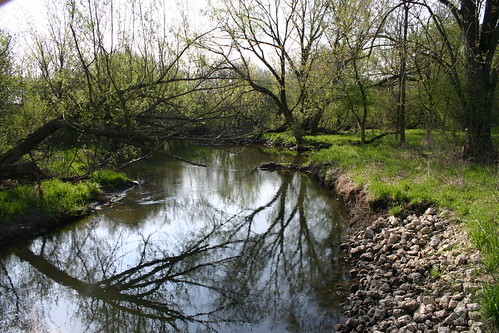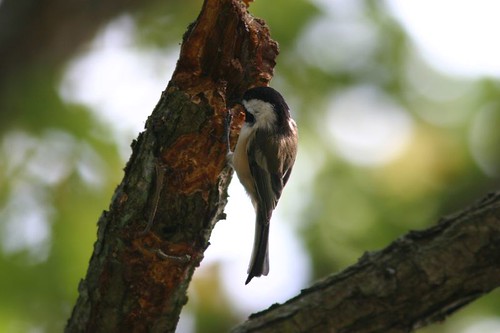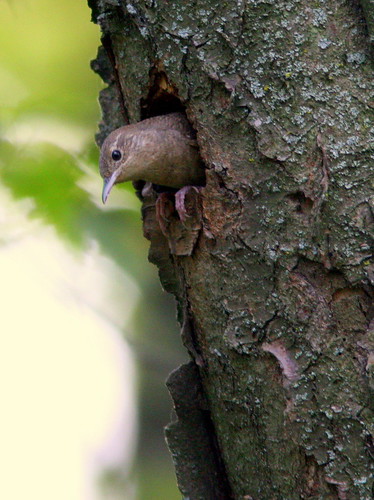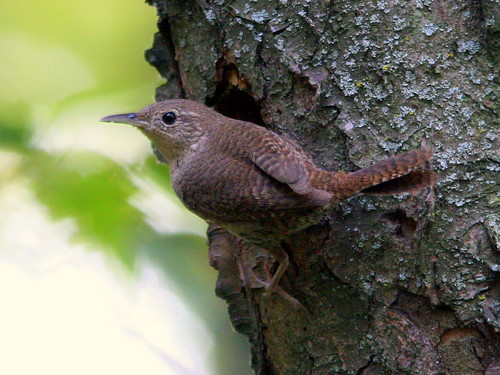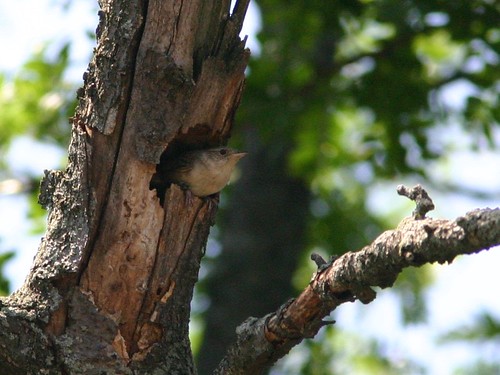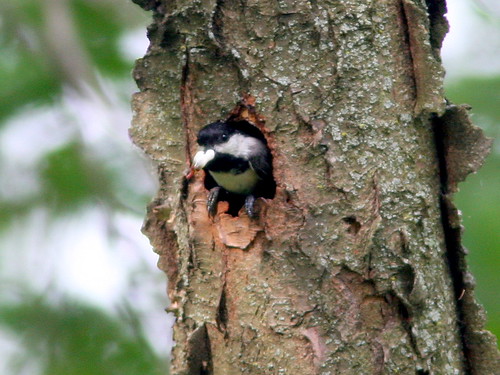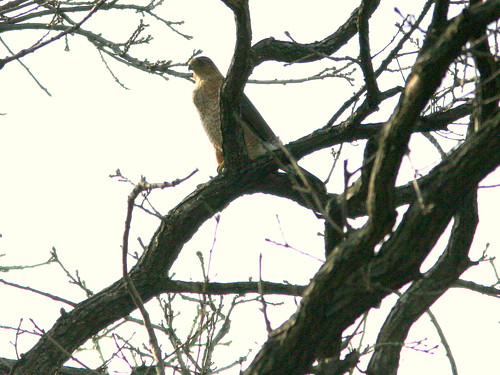Hawk’s Bluff Park, one of our Illinois birding “patches,” is a 30 acre strip of maturing second-growth oak woodlands and prairie that runs along Mill Creek in Batavia. It includes a playground, small basketball court, fitness track, picnic shelter, and a fishing deck. About a mile of trails loop through the woods and traverse three areas of recovering tallgrass prairie. It is nicely managed, but one aspect of its maintenance causes us some concern.
Mill Creek, looking south, downstream , April 2008:
Mill Creek, downstream, March 16, 2010. The old tree to the left has fallen into the creek, but little else has changed since last spring, now awaiting the burst of new growth:
Mill Creek, upstream view, April, 2008: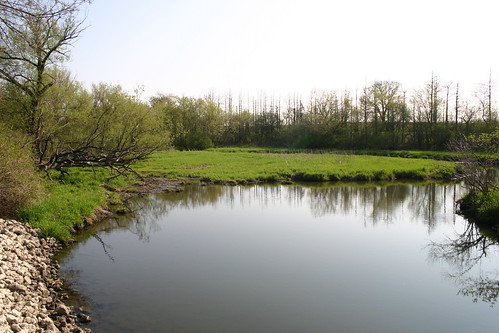
Mill Creek, upstream, March 16, 2010. Streamside vegetation was generally not disturbed. Except for the seasonal lack of green grass and leaves, there has been no substantial change:

Along wood-chip path, May 14, 2008 just before official opening of Hawk’s Bluff Park:
March 19, 2010– Note the how the understory has been cleared of standing dead wood, and the tangle of saplings has been thinned: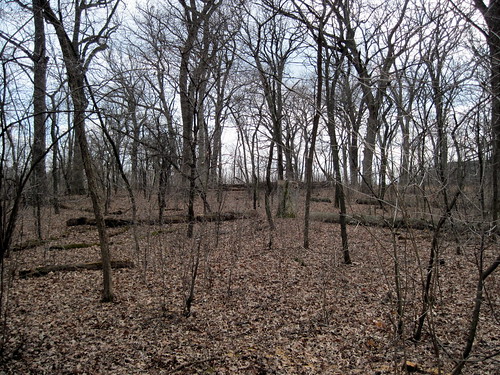
The wooded area has recently undergone fairly intensive pruning and culling. Many saplings that compete with the large trees have been removed from the understory. Fire danger is thus reduced, and more light will reach the wildflowers on the forest floor. Dead and unhealthy trees were cut down and chipped on-site and used to improve the unpaved trails.
The Emerald Ash Borer was introduced into the United States only eight years ago. This very invasive insect is a threat to native White Ash trees, considered the best wood for baseball bats, and famous because of the Louisville Slugger. The only effective control measure for the exotic borers has been to cut down all infected trees.
While pruning and thinning may be essential to maintain the health of these public wild lands, the removal of dead and dying snags has had an adverse effect. Sick and dead trees are cafeterias for woodpeckers, nuthatches, chickadees and other birds that glean and dig for insects. Old hollow limbs and woodpecker holes are recycled as homes for other cavity-dwellers. Now, I fear that there will be a shortage of nest holes.
Below are photos of four separate nest cavities that have been eliminated in the pruning process. These are only the ones that I found by accident.
Black-capped Chickadee explores nest hole, 2009:
House Wren pokes head out of a second nest cavity, August 4, 2009:
House Wren at entrance of same nest, August 4, 2009:
House Wren nesting in an old woodpecker hole, June, 2008:
Chickadee emerging from a fourth nest hole with fecal sac, June 6, 2009:
A pair of Cooper’s Hawks nested in this tree last year, and in nearby trees for the past four years or more. During the past two weeks I have found both of them roosting in and near this tree: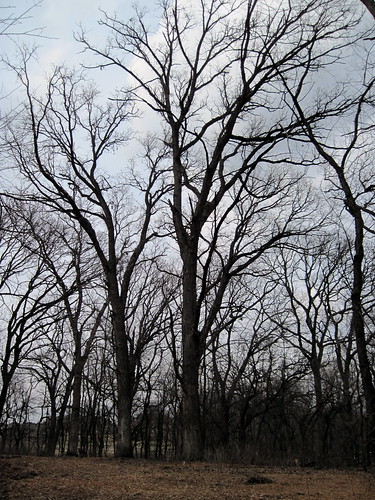
Here is last year’s nest:
The adults often take concealed perches. Uncannily, if I have my camera, I fail to see them until they flush. Several times, when I was walking the dogs without my camera, they have posed in plain sight! This is the best shot I have gotten so far. This bird has eaten recently and well– notice its protruding full crop:
Mowing of the prairie grass has probably enhanced the success of ground-nesting species, such as the Killdeer, whose nest I photographed on May 12, 2009: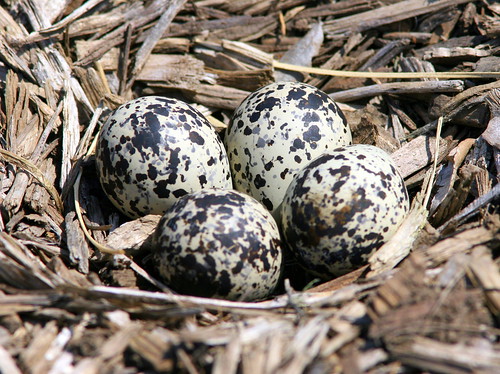
Other Blog Posts that reference Hawks Bluff Park
Spring
birding: Something new every day
Grandchildren
Explore Hawks Bluff Park
Browsing a
Virtual Birding Library
My
birding companion has a new little sister













